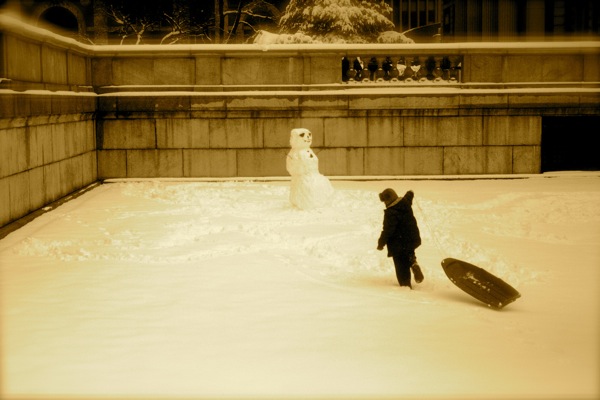Five tips on photographing snowy scenes

One of the most beautiful photo backdrops can be right after a fresh snowfall. Everything is crisp, clean and glowing. But that window doesn't often last long, and it's not always easy to photograph. Here are five tips on shooting snowy scenes better.
1. Exposure: Snow is very, very bright. Just like you shouldn't forget to bring sunscreen when going skiing, you should also prep your camera. If you're camera has a snow setting (usually point-and-shoots do), try that out first and see how you like it. For manual settings, play around with your white balance settings until you find one that is the most natural. AWB usually doesn't work well in snow. Also, don't overexpose by more than +1 stop. Avoid overexposing as much as possible because you can't get anything out of the photo later, even with some Photoshop work. And for action snow shots, start with an ISO 200, and work up from there.
3. Composition: Wintertime makes for some great landscape photos. The mountains, the trees, frozen lakes and streams. All of it can seem magical and often work together very well. Work on taking these, but don't forget about the little things. Using macro mode and the rule of thirds, think about smaller subjects, like maybe a flower peaking out through the snow, different perspectives (like through the window in the image below). And don't forget about all the good times at the ski lodge.
5. Safety: Snow has the magic of turning a dull spot into a winter wonderland, but it isn't always safe either. Especially if you're planning to go out alone and/or around an odd hour, be sure you know where you are and how to get back home safely. Also, make sure your cell phone is fully charged AND both the phone and your camera can handle below-freezing temperatures. Also, check the weather in advance to see if another snowfall (especially a heavy one) is headed your way while you intend to be out and about.
